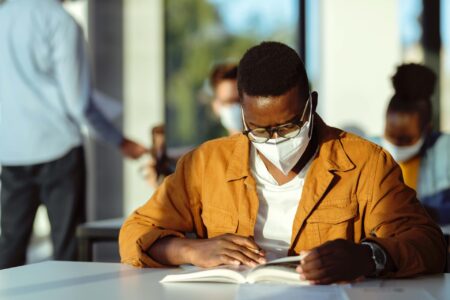Reopening university and college campuses with primarily in-person classes is associated with a significant increase in cases of COVID-19 in the counties where the schools are located, according to a new study.
“We are able to predict between 1,000 and 5,000 additional cases per day due to colleges reopening for face-to-face instruction, with our best estimate being somewhere around 3,000 cases per day or around 21,000 cases per week,” said study co-author Anirban Basu, professor of health economics and director of the CHOICE Institute at the University of Washington School of Pharmacy.
More specifically, campuses with mostly in-person instruction contributed to increases in COVID-19 cases in their county by 0.024 cases per 1,000 residents. And, when students come from outside counties with surging cases, an additional 0.0119 per 1,000 residents come down with COVID-19.
“We don’t see similar spikes in cases for counties with colleges that reopened with primarily online instruction. The total spike attributed to face-to-face campus reopenings accounts for nearly 6 percent to 7 percent of all cases in the U.S. during this time,” Basu said. “Given the timing of the mobility and case spikes, these results are not likely a manifestation of additional testing or sick cases moving onto college campuses.”
The researchers sampled 1,409 colleges from July 15 to September 13 and out of those classified 886 schools as conducting classes primarily in person, while 483 are teaching primarily online. Out of 1,142 U.S. counties examined in this study, only 779 contained a college in one of these categories, with 15 campuses not open during the sampling period. The researchers then compared these counties to counties without a college and looked at the periods of two weeks before the start of classes and two weeks after instruction began.
One of the signals the researchers used to determine the increase of visitors to a campus, whether for in-person instruction or on campuses with primarily online courses, was the increased presence of cell phones. Regardless of the type of instruction offered, the number of cell phones visiting campus increased significantly in the week leading up to the start of classes and after classes had begun. However, cell phone traffic was higher on in-person campuses. And counties with primarily online campuses did not see a statistically significant increase in COVID-19 cases.
“Our main data track cell phone movement on and off campuses and county-level COVID-19 daily reported cases,” Basu said. “And all evidence suggests there is a distinct local transmission component, given spikes in cases are happening two weeks after college opens. We also found spikes in cases to be higher for face-to-face colleges that drew students from communities that have seen recent spikes in cases.”
The researchers added that campus administrators and other local authorities should use these findings when considering additional strategies to mitigate COVID-19 outbreaks, and “think carefully” about cases in their counties as well as where students are coming from when planning their spring 2020 semesters.
From Futurity






